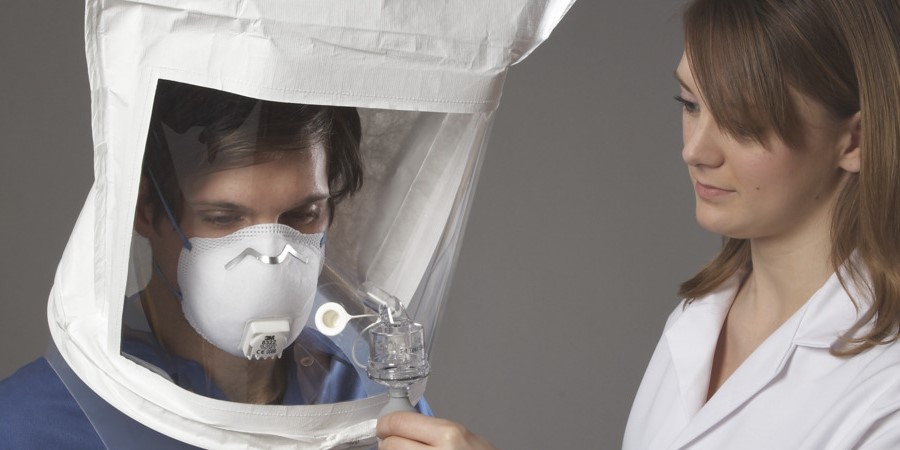 Fit testing is important, but there's more to a fit than just your mask. Cartridges and filters remove contaminants from the air you breathe, but they aren't one-size-fits-all - there's a lot of different types, and they aren't all interchangeable.
Fit testing is important, but there's more to a fit than just your mask. Cartridges and filters remove contaminants from the air you breathe, but they aren't one-size-fits-all - there's a lot of different types, and they aren't all interchangeable.
Which filter do I need?
Understanding the different types of particulate filters and gas and vapour cartridges will help you select the right one.
As per AS/NZS 1715 there are 3 different classes of particulate filters, P1, P2 and P3
The negative pressure particulate categories are based facepiece coverage. All particulate filtering facepieces that cover the nose and mouth area only can achieve only a P1 or P2 classification. A P3 classification can ONLY be achieved when worn with a full facepiece.
- Class P1 particulate filters are used against mechanically generated particulates e.g. silica and wood dust.
- Class P2 particulate filters are used for protection against mechanically and thermally generated particulates or both e.g. metal fumes.
- Class P3 particulate filters are used for protection against highly toxic or highly irritant particulates e.g. beryllium (when worn with a full facepiece).
- NOTE: certain contaminants may have specific respiratory selection criteria outside this guide e.g. asbestos.
- Gas and vapour cartridges categories are distinguished by their filter type and class. Refer to AS/NZS 1715 for the complete list of filter types and what they are used for. Some commonly used filter types are:
- Filter type A = Certain organic vapours (boiling point above 65⁰C) from solvents such as those in paints and thinners (cartridge label colour = brown)
- Filter type B = Acid gases such as chlorine and hydrogen sulfide (sulphide) (cartridge label colour = grey)
- Filter type E = Sulfur dioxide (cartridge colour = yellow)
- Filter type ABE = are suitable for both certain organic vapours/acid gases and sulfur dioxide e.g. solvents, chlorine and sulfur dioxide (cartridge label colour = brown, grey and yellow)
- Filter type K = ammonia gas (cartridge label colour = green)
- Filter type ABEK = are suitable for both certain organic vapours/acid gases, sulfur dioxide and ammonia (cartridge label colour = brown, grey, yellow and green)
Why change your cartridges and filters?
If you continue to use cartridges when the material has reached their capacity, they are no longer able to protect you. Particulate filters will keep removing contaminants but will become harder and harder to breathe through, increasing discomfort.
Dusts, Fumes, and Mists
Dusts, fumes and mists can irritate your nose, throat and upper respiratory system. Some particles, depending on their size and type, can pass through to your lungs, where they can damage the lung tissue and cause more serious health hazards
Gases and Vapours
Gases and vapours can pass immediately to your lungs. From there, they can be absorbed into your bloodstream, where they can damage your brain and internal organs.
Shelf Life
Provided they are stored unopened in the original packaging, 3M cartridges and filters will last five years from manufacture date. Once removed from their packaging they should be replaced after six months as recommended by Australian / New Zealand Standard 1715 (even though they have not been used).
Before work, ensure you have:
- Checked your cartridge/filter to ensure it can capture your specific contaminant(s).
- Checked the expiry date on the packaging
- Inspected your respirator for any missing or damaged parts
- Completed a fit check and the respirator fits firmly to your face
If while working you start to taste or smell the contaminant inside your respirator, leave the contaminated area. Your cartridges may be saturated and need replacing. To minimise this occurring, set up a cartridge change schedule
How long do cartridges and filters last?
The life of cartridges and filters depends on a number of factors including the type, volatility and concentration of contaminants in the air, your breathing rate, humidity, temperature and how you store your respirator.
When should I use a filter on top of a cartridge?
When you are exposed to a combination of gases/vapours and particles. For example, spray painting produces solvent vapours and mist droplets. It is these mist droplets that create particles. Gas/Vapour cartridges do not filter these particles and particle filters do not filter vapours. Therefore, you need to consider if a combination is required for your task. Combination cartridges are also available, and may be the right option for your needs.
For further information, view 3M's page on respirator cartridges here or read their comprehensive guide here





